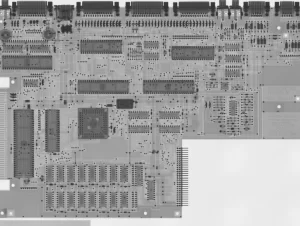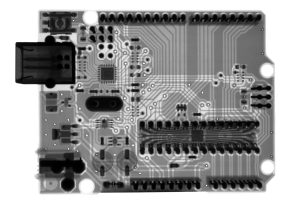We cover stories about 3d printing innovative manufacturing and new concepts.

What Are The 4 Reasons To Reverse Engineer Something?
The 4 reasons for reverse engineering something are to improve it, to understand it, to make it cheaper, or to make it better. 1. To understand how it works 2. To improve upon it 3. To find out how it was made 4. To create

What Are The 6 Steps Of Reverse Engineering?
There is no definitive answer to this question, as the six steps of reverse engineering can vary depending on the product or system. However, in general, the six steps of reverse engineering are: Identify the design or product to be reverse-engineered. Understand how the system

The Advanced Guide to Reverse Engineering Definition
Reverse engineering is taking something apart to see how it works to replicate or improve upon it. In reverse engineering, also called back engineering, the process of disassembly and analysis is applied to a product or system to extract design information from it. This information

What Material Is Used For 3D Printing?
The material used for 3D printing is plastic. 3D printing, also known as additive manufacturing, is a process of making three-dimensional solid objects from a digital file. The creation of a 3D printed object is achieved using an additive process, where successive layers of material
What Are The 3 Types Of 3D Printing?
The three types of 3D printing are stereolithography (SLA), selective laser sintering (SLS), and fused deposition modeling (FDM). Three-dimensional printing, also known as additive manufacturing, is the construction of a three-dimensional object from a CAD model or a digital 3D model. The first step in

What Is 3D Printing Mainly Used For?
3D printing is primarily used for prototyping and manufacturing small batches of parts. 3D printing is a process of making a three-dimensional solid object of almost any shape from a digital model. 3D printing is mainly used for prototyping and manufacturing of parts that are

What Is 3D Printing And How Does It Work?
3D printing is a process of making three dimensional solid objects from a digital file. 3D printing is a type of additive manufacturing technology where a three-dimensional object is created by laying down successive layers of material. 3D printers are generally faster, more affordable and

What Reverse Engineering And Malware Analysis Experts Want You to Know
Reverse engineering is taking a software program apart and understanding how it works. Malware analysis is the process of determining what a piece of malware does and how it works. Reverse engineering is taking a software program or hardware device and figuring out how it

What Is The Concept Of Reverse Engineering?
Reverse engineering is the process of taking something apart and figuring out how it works. Reverse engineering is the process of taking a product apart and analyzing its components and design in order to understand how it works. The goal of reverse engineering is to
What Is Another Name For Reverse Engineering?
Reverse engineering is also known as back engineering. Reverse engineering is the process of taking an already existing product and determining how it was created. This can be done in order to create a similar product, or to improve upon the original design. Sometimes, reverse

What Are The Disadvantages Of Reverse Engineering?
There are a few disadvantages to reverse engineering which include a potential loss of trade secrets, infringement on patents, and possible legal issues. Reverse engineering is the process of taking a product apart and analyzing it in order to understand how it works and figure
What Are The Benefits Of Reverse Engineering?
Reverse engineering can be used to improve upon a design, to find hidden features in a design, or to diagnose a design flaw. Reverse engineering is the process of taking apart a product in order to learn how it was made, and then using that
What Are The 6 Steps Of Reverse Engineering?
There is no one definitive answer to this question as the six steps of reverse engineering can vary depending on the specific product or system being reverse engineered. However, in general, the six steps of reverse engineering are: 1) identify the system or product to

Reverse Engineering Definition In Cyber Security
Reverse engineering is the process of figuring out how a system works by looking at its parts and how they work together. Reverse engineering is the process of analyzing a piece of software or hardware in order to understand how it works and to identify
Reverse Engineering For Beginners
Reverse engineering is the process of taking something apart and figuring out how it works. If you’re interested in learning how to reverse engineer software, this article is for you. We’ll cover the basics of reverse engineering, including what it is, why it’s useful, and
What Is Adb Debugging?
ADB debugging is a communication between your computer and your Android device that allows you to debug your Android apps. Android Debug Bridge (adb) is a versatile command line tool that lets you communicate with a device. The adb command facilitates a variety of device
What Does Usb Debugging Mean?
It is a mode that allows Android devices to communicate with computers in order to facilitate development options. USB Debugging is a mode that allows Android devices to communicate with computers using the Android Debug Bridge (ADB). It allows developers to view and control various
Is Blender Good For 3d Printing?
No, blender is not good for 3d printing. There are a lot of different ways to 3D print, and each one has its own advantages and disadvantages. One popular method is using a 3D printer that uses a Blender file as its source material. Blender
Is Blender Good For 3d Printing?
No, blender is not good for 3d printing. There are a lot of different ways to 3D print, and each one has its own advantages and disadvantages. One popular method is using a 3D printer that uses a Blender file as its source material. Blender
How Does 3d Printing Use A Lot Of Electricity?
3d printing uses a lot of electricity because it has to heat up the filament to a high temperature. 3D printing technology has revolutionized the manufacturing process, making it possible to create products with intricate designs and shapes that were previously impossible to produce. However,
Is Solidworks Good For 3d Printing?
Yes, Solidworks is a good software for 3D printing. Solidworks is a computer-aided design (CAD) and computer-aided engineering (CAE) software that is used for creating 3D models. It is a popular program among engineers and designers, and it is also used by many 3D printing
Why Are 3d Printing Services So Expensive?
The materials and machines used for 3D printing are expensive. 3D printing services are expensive for a variety of reasons. First, the machines that are used to create three-dimensional objects are very expensive to purchase and maintain. Second, the materials that are used to create

How Much Filament Is Used In 3D Printing?
Filament is the material used in 3D printing, and the amount used depends on the size and complexity of the object being printed. 3D printers have become increasingly popular in recent years, as they offer a quick and easy way to create three-dimensional objects. However,
Electronic Schematic Capture And Simulation
Electronic schematic capture and simulation is the process of designing and testing electronic circuits. Most electronic design today is done using computer software. This software is used to create what are called “schematics”. A schematic is a drawing of an electronic circuit. It shows the
How To Debug Code? – HiberXen
There is no universal answer to this question as it depends on the specific code being debugged and the tools available. However, some general tips on debugging code include using a debugger tool to step through the code line by line, adding print statements to
R&D Services
R&D services refers to research and development services. R&D services are research and development services that help organizations in the process of creating new products or services. These services can be used to improve existing products or services, or to create entirely new ones. R&D

Injection Molding Plastic Types
The three main types of plastic used in injection molding are polyethylene (PE), polypropylene (PP), and polystyrene (PS). Injection molding is a process that can be used to create a wide variety of parts and products from a variety of plastics. Injection molding is a
